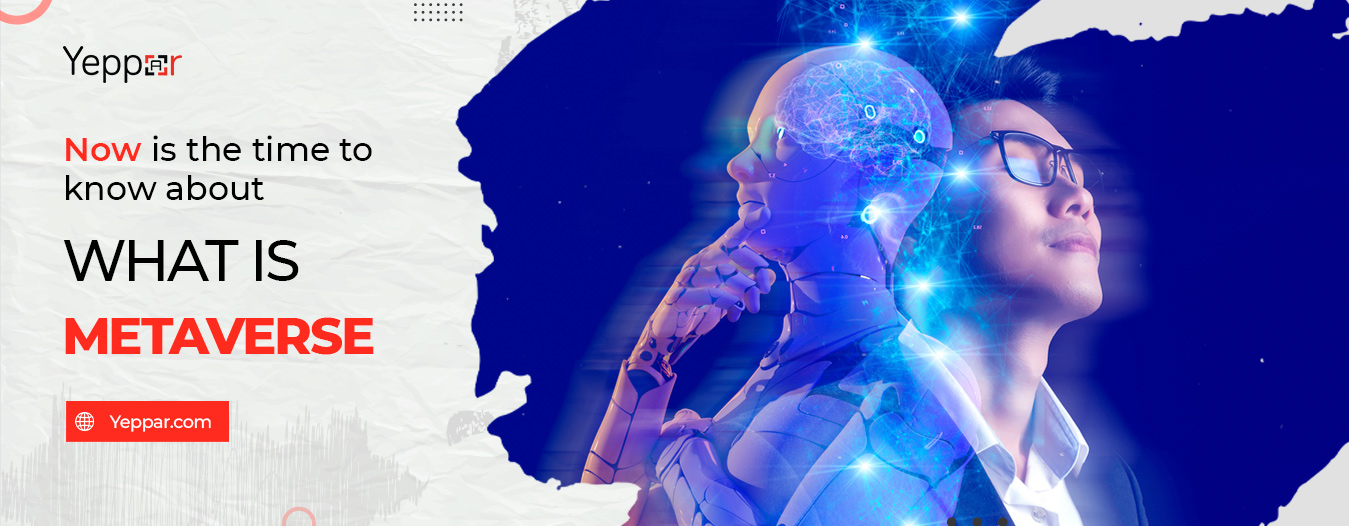The appellation ‘Metaverse’ relates to an ethereal world where people can interact through different forms of virtual technology. It’s a hybrid of technology features such as virtual reality, augmented reality, and video in which users live in the digital realm. The metaverse’s supporters envisage its users working, playing, and remaining connected with everyone through everything from football matches and conferences to virtual excursions around the world. Consider the Metaverse to be a never-ending digital parallel realm that is linked to our physical reality. It’s data that’s just out of reach of our physical body, but that can be accessed and engaged with through various technologies. The Metaverse is limitless because we can contribute knowledge to it on a constant basis, and it is persistent because it exists even when we are not interacting with it. A metaverse will soon become a source of amusement and sustainability in a virtual reality experience, as well as a means of avoiding the reality of our life.

Technologies involved in Metaverse

Metaverse technology is something that is expected to emerge in the near future, the world has already accepted this age. Metaverse technology will be used in many aspects like virtual meetings, visiting a manufacturing plant, or attending a training program. This section will describe how Metaverse is evolving various technologies.
-
Blockchain:
-
The combination of Metaverse and blockchain technology will significantly improve the Internet ecosystem’s technological advancement. Metaverse is based on decentralization, which allows all users to own their data and roam freely without the influence of a thyroid party. Blockchain in Metaverse offers a creative experience. Various 3D expressions are being created using Augmented Reality, Virtual Reality, Mixed Reality, and Extended Reality technologies. These technologies successfully create virtual space providing the finest possible communication and interaction with one another.
-
Augmented Reality:
-
Its acquaintance with computer programmed environment augments an element of the user’s world. We can use augmented reality glasses and contact lenses to intensify our view of the world. AR is a technology that projects digital information onto real-world environments. It has traditionally necessitated camera and screen access in order to examine the physical environment and overlay new data.
-
Virtual Reality:
-
As virtual reality technology improves and becomes more widely available, more actions will be recreated in virtual form within the metaverse. As a result, we’ll be ready to use virtual reality headsets to view each other in 3D while seated at a virtual table. It will feel as if we are in the same room, which will make it much simpler to unwind and chat freely.
-
Artificial Intelligence:
-
AI benefits the Metaverse in a variety of ways. Characters, landscapes, structures, and character routines are just a few of the Metaverse elements that AI can help with. Significant AI capabilities are possible with gaming engines like Unity. AI can help us produce more complex Metaverse assets with fewer resources by speeding up the software development process.
-
Internet of Things (IoT):
The Internet of Things is another great metaverse technology that has experienced a lot of development. The internet of things, or IoT, allows you to connect and sync your devices to a common network or the internet as we know it. This allows you to use numerous devices on the network at the same time or separately as needed. In a metaverse, this could be a useful technique for synchronizing and connecting various physical devices. Eventually, these devices would be joined to form a Metaverse access point.
History of Metaverse
1992 – Snow Crash novel
In his 1992 novel Snow Crash, science fiction writer Neal Stephenson developed the term “metaverse,” in which humans interact with each other and software agents as avatars in a three-dimensional virtual reality using the metaphor of the actual world.
2003 – Second Life
Second Life is an online virtual environment created by Linden Lab’s Philip Rosedale and his crew in 2003. It was a forerunner to the Metaverse worlds that are now being constructed. Low bandwidths and long “res” times were two of the greatest issues Second Life users faced, making it a less-than-ideal experience. Even now, Second Life boasts a million active users who spend an average of nearly four hours every day in this virtual environment.
2006 – Roblox game
This online platform was launched, allowing users to create and play games created by others. It became an important source of interaction for young people during the 2020 pandemic, and it was the year’s third-highest-grossing game.
2020 – COVID
When the COVID outbreak was caused in 2020, people all around the world were being quarantined. As a result, the metaverse swiftly became the preferred destination for an increasing number of young people, gamers, and those looking to make money online. In our polarised society, the metaverse has taken on a tone of defiance toward existing institutions – the more entrenched they are, the more vulnerable they are. This is driving people to the metaverse’s underground economies and worlds, creating a “perfect storm” for Metaverse expansion.
2020 – Alien Worlds NFT Metaverse
The NFT characters interacted in a decentralized autonomous organization to mine tokens and complete other activities in this immensely successful app, which was designed with a multi-metaverse interplanetary scenario. Alien Worlds had over 2.5 million users by 2021, but its value extends beyond that: the game is based around important lessons for teaching people about cryptocurrencies and crypto-mining principles.
Conclusion
In a nutshell, the metaverse is changing and offering enthralling experiences in a variety of ways. Daily, new use cases are being introduced, and we’re seeing a lot more firms get on board to be a part of this innovative technology as both a provider and a consumer. It will take a long time for the ecosystem to make the metaverse a thriving reality, but the future appears promising in this regard.












